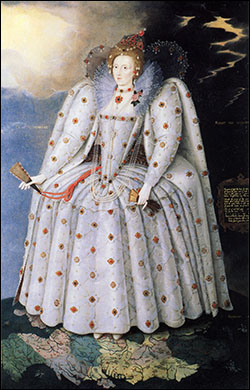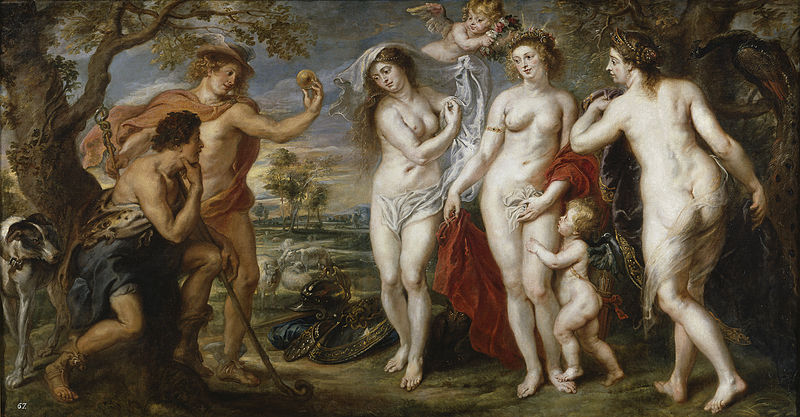A feast for the eyes!
Do click here and spend some time considering these portraits of Elizabeth, at the bottom of the page you can find links to even more portraits from her early years and from her final years, too. Here's the famous Ditchley Portrait c. 1592 to inspire you!

Do click here and spend some time considering these portraits of Elizabeth, at the bottom of the page you can find links to even more portraits from her early years and from her final years, too. Here's the famous Ditchley Portrait c. 1592 to inspire you!
Here's Hans Eworth's Elizabeth and Three Goddesses (1569), which is a reworking of the popular 'Judgement of Paris' subject (examples from Botticcelli and Rubens given below). The apple has been transformed into the Sovereign's Orb. Elizabeth's posture when facing Juno, Minerva, and Venus is authoritative and commanding as opposed to the crouching Paris.
Hans Eworth, Elizabeth and Three Goddesses (1569)
Peter Paul Rubens, The Judgement of Paris (1638-9)

Hans von Aachen, Le jugement de Paris (1588)
Sandro Botticelli, Juicio de Paris (1485-88)















